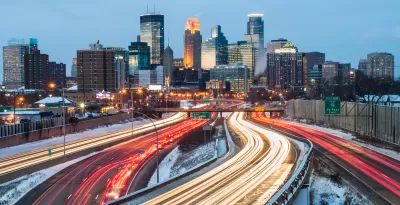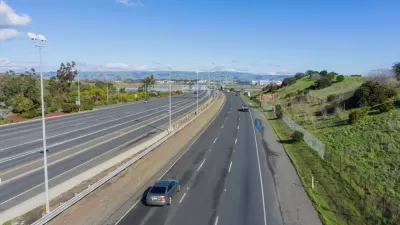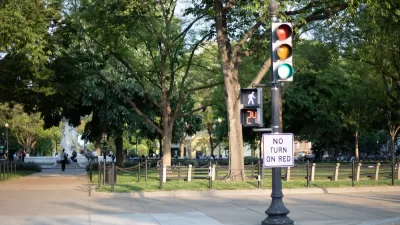Minnesota is the latest state to enact fines for a law already on the books requiring slow drivers to merge right. As such laws gain popularity, it's time again to consider the sometimes counterintuitive facts of traffic safety.

"Slower motorists in Minnesota best stick to the right lane — or face a possible fine come Aug. 1," reports Janet Moore.
The Minnesota State Legislature approved a law in May that makes it illegal for drivers to liner in the farthest left lane, also known as the passing lane or the fast lane.
While every state has a law requiring slower vehicles to move to the right lane, only about a dozen have full-fledged edicts that involve a financial penalty, according to the National Conference of State Legislatures. Fines vary across the country, from as little as $20 to more than $250.
Moore's description checks out with previous coverage of passing lane cloggers, and a trend toward increasingly punitive response to the practice, picked up by Planetizen in both 2014 and 2017. The article from 2014, for instance, digs into the complicated question of whether making room for drivers to speed in the left lane is actually safer than allowing slow drivers to clog the lane, thus force faster drivers to slow and merge.
One big remaining question for Minnesota, now that it's passed the new law, is how to enforce the standard. "The law doesn’t quantify how slow a vehicle must be traveling in the left lane in order to be cited," according to Moore. "It just states, 'a person must move out of the left-most lane to allow another vehicle to pass' when practical."
FULL STORY: New Minnesota law to fine slower drivers in the left lane

Planetizen Federal Action Tracker
A weekly monitor of how Trump’s orders and actions are impacting planners and planning in America.

Restaurant Patios Were a Pandemic Win — Why Were They so Hard to Keep?
Social distancing requirements and changes in travel patterns prompted cities to pilot new uses for street and sidewalk space. Then it got complicated.

Map: Where Senate Republicans Want to Sell Your Public Lands
For public land advocates, the Senate Republicans’ proposal to sell millions of acres of public land in the West is “the biggest fight of their careers.”

Maui's Vacation Rental Debate Turns Ugly
Verbal attacks, misinformation campaigns and fistfights plague a high-stakes debate to convert thousands of vacation rentals into long-term housing.

San Francisco Suspends Traffic Calming Amidst Record Deaths
Citing “a challenging fiscal landscape,” the city will cease the program on the heels of 42 traffic deaths, including 24 pedestrians.

California Homeless Arrests, Citations Spike After Ruling
An investigation reveals that anti-homeless actions increased up to 500% after Grants Pass v. Johnson — even in cities claiming no policy change.
Urban Design for Planners 1: Software Tools
This six-course series explores essential urban design concepts using open source software and equips planners with the tools they need to participate fully in the urban design process.
Planning for Universal Design
Learn the tools for implementing Universal Design in planning regulations.
Heyer Gruel & Associates PA
JM Goldson LLC
Custer County Colorado
City of Camden Redevelopment Agency
City of Astoria
Transportation Research & Education Center (TREC) at Portland State University
Camden Redevelopment Agency
City of Claremont
Municipality of Princeton (NJ)





























